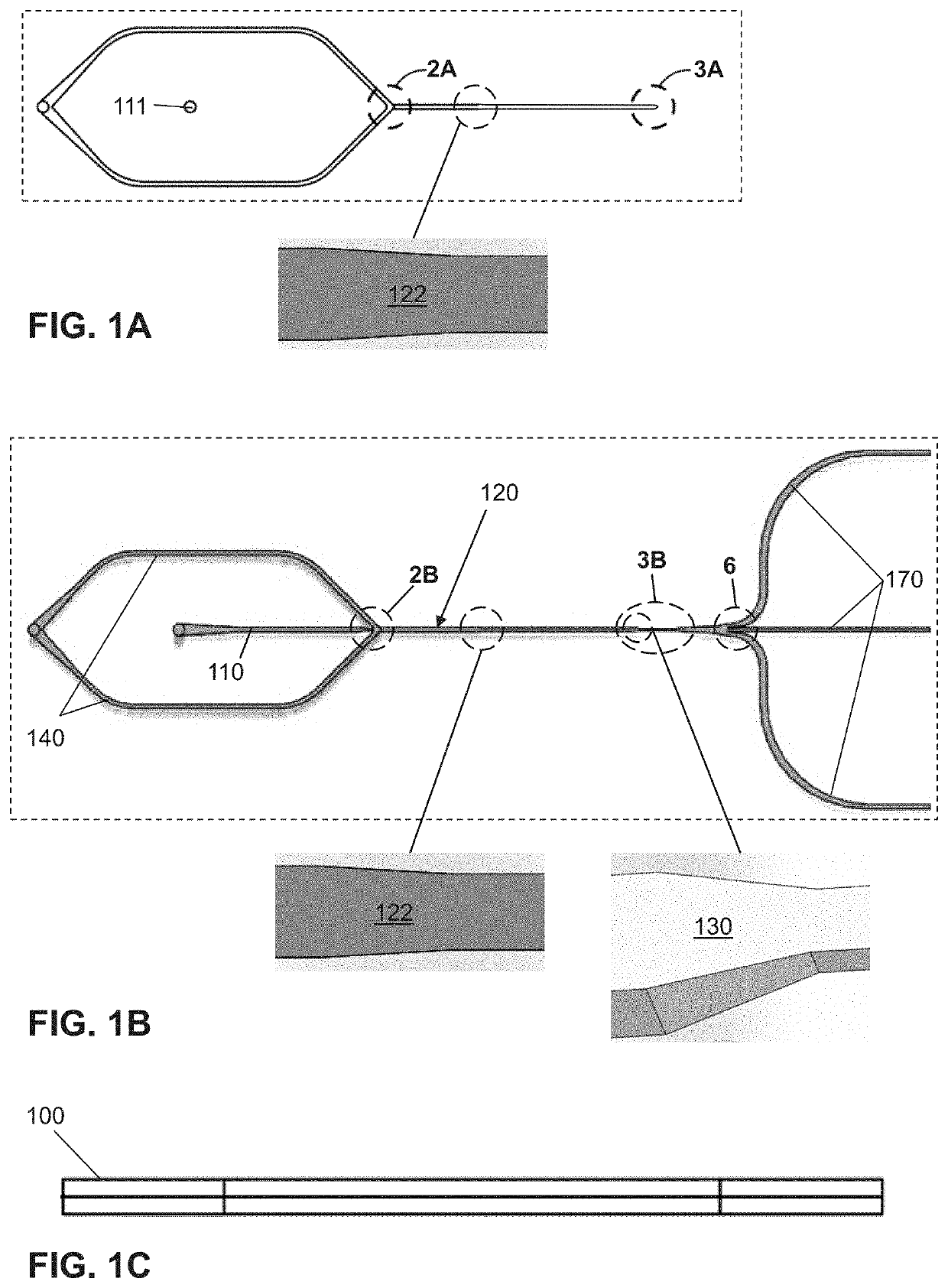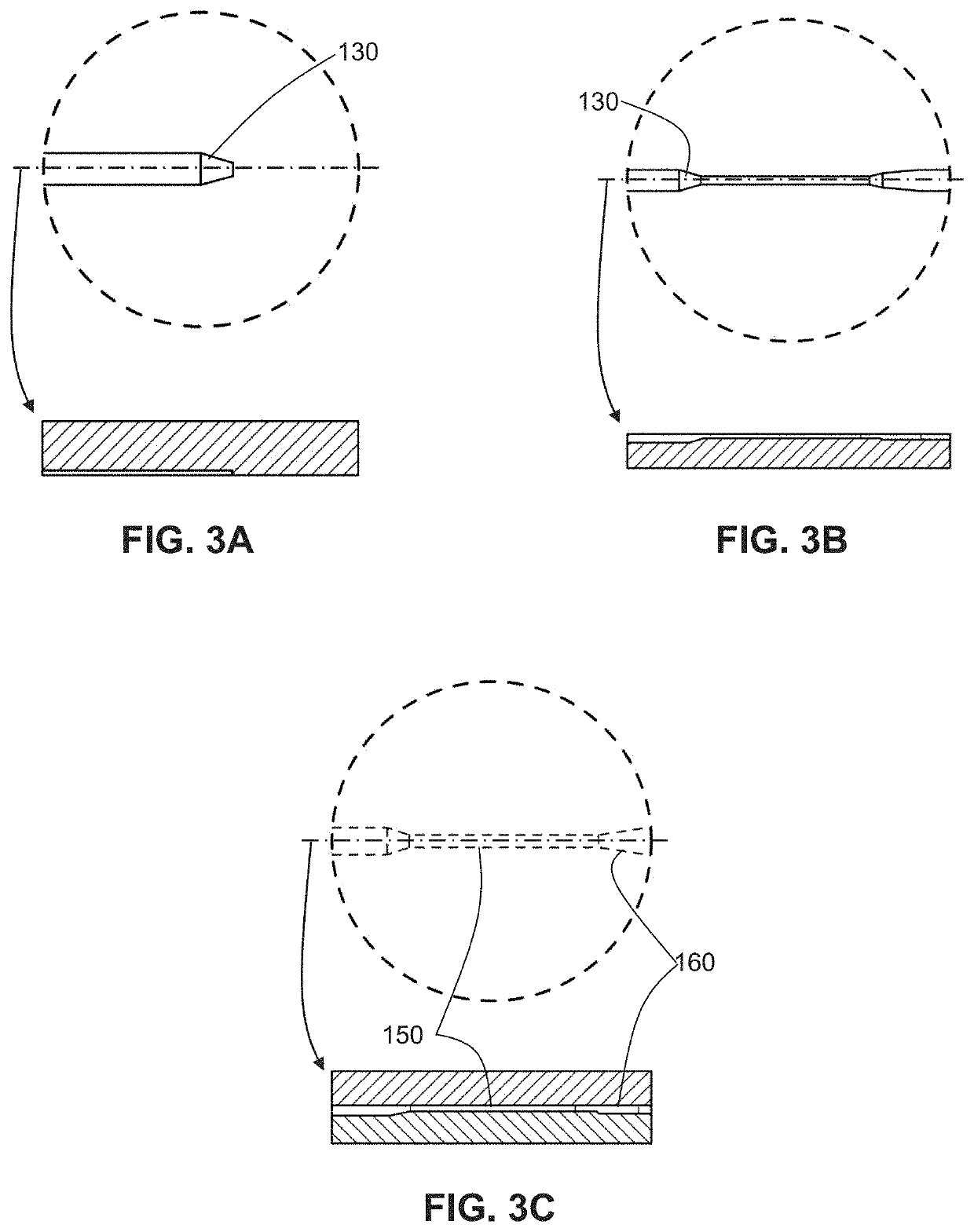Single-sheath microfluidic chip
a microfluidic chip and single-sheath technology, applied in the field of single-sheath microfluidic chip design, can solve the problems of severe volume restrictions, process is often time-consuming, and current separation techniques cannot, for example, produce the desired yield, etc., to achieve the effect of simplifying system complexity, reducing operational costs, and reducing the volume of sheath fluid
- Summary
- Abstract
- Description
- Claims
- Application Information
AI Technical Summary
Benefits of technology
Problems solved by technology
Method used
Image
Examples
Embodiment Construction
[0038]Before turning to the figures, which illustrate the illustrative embodiments in detail, it should be understood that the present disclosure is not limited to the details or methodology set forth in the description or illustrated in the figures. It should also be understood that the terminology is for the purpose of description only and should not be regarded as limiting. An effort has been made to use the same or like reference numbers throughout the drawings to refer to the same or like parts.
[0039]Following is a list of elements corresponding to a particular element referred to herein:[0040]100 microfluidic chip[0041]110 sample micro-channel[0042]111 inlet of sample micro-channel[0043]112 narrowing region[0044]113 outlet of sample micro-channel[0045]114 bottom surface of narrowing region[0046]115 sidewalls of narrowing region[0047]120 downstream micro-channel[0048]122 constricting portion[0049]124 inlet of downstream micro-channel[0050]125 sidewalls of constricting portion[0...
PUM
 Login to View More
Login to View More Abstract
Description
Claims
Application Information
 Login to View More
Login to View More - R&D
- Intellectual Property
- Life Sciences
- Materials
- Tech Scout
- Unparalleled Data Quality
- Higher Quality Content
- 60% Fewer Hallucinations
Browse by: Latest US Patents, China's latest patents, Technical Efficacy Thesaurus, Application Domain, Technology Topic, Popular Technical Reports.
© 2025 PatSnap. All rights reserved.Legal|Privacy policy|Modern Slavery Act Transparency Statement|Sitemap|About US| Contact US: help@patsnap.com



